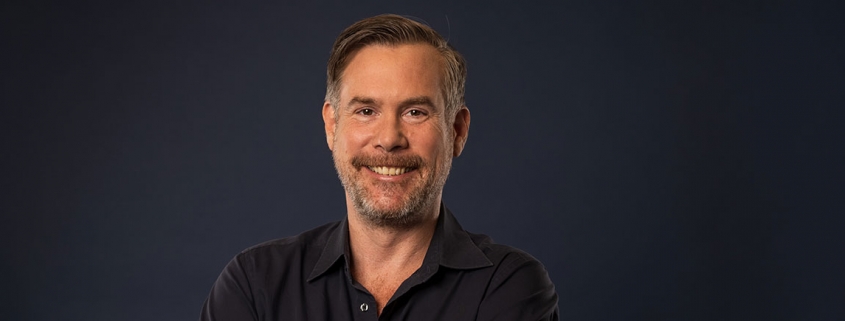Since summer 2021, Christian Waitzinger has been Chief Experience Officer (CXO) at Plan.Net Group, one of the leading digital service providers in the field of customer experience and commerce. As an experience and design expert, Waitzinger is responsible for defining a service and product portfolio for designing and implementation of data-driven customer experiences. In the following Experience Manifesto, he describes what experiences means in today’s world, what it needs to represent, and what the requirements are for a high-quality experience.
The way that customers perceive and interact with brands – whether at home or on the go, via digital channels, in stores or when contacting a service hotline – has changed. Brands today need to provide a seamless, contextualized, and data-driven customer experience in order to meet customer expectations. This is nothing new. Yet, it is also no secret that very few companies have managed to satisfy rising customer demands and create a truly differentiating brand experience.
This is precisely what we are striving for with our holistic customer experience management: Our goal is to understand customers across every interaction, touchpoint and organizational unit – from marketing to sales to customer service departments. Our task is to orchestrate and systematically improve all of these areas, because the key to lasting customer loyalty is a brand experience that is unique, personalized, appropriate anytime, anywhere, and constantly evolving.
Ideally, this process is managed centrally by collecting and evaluating customers’ experiences and data. We utilize this information to continuously improve the experience across sales, customer service and e-commerce. The result is a loop optimized incrementally by decision-makers via a process of distilling the insights gained from customer interactions and incorporating these into communications and further product development. The primary task is to build a personal relationship with the consumer: to create an ongoing dialog that calibrates the right time, place, and information with the customer’s personal interests.
Alongside a number of specialized disciplines – such as data, media, tech, user experience design and creation – what is needed above all is a cohesive experience strategy along with overarching organizational structures and processes within a company that are attuned to customer needs. To achieve this, companies must network their individual expertise and create synergies between creation, media, data, and tech – in other words, they must think about and orchestrate their customer experience holistically.
INTRODUCE OVERARCHING ORGANIZATIONAL
PROCESSES
An experience strategy must be supported by all departments. It requires the right resources, skills and tools as well as the empowerment of individual employees and departments to be able to make decisions quickly and independently. However, this is often difficult within the traditional organizational structure of a company. A better approach is to establish customer journey teams that collaborate across departments, as some of our customers are already doing today.
Holistic customer journey
mapping plays a key role in the organizational
process, allowing us to centrally collate key insights
in terms of customer
expectations, data, and processes. With these as a basis,
we are able to identify customers’ rational and emotional
needs and a range of potential
areas for improvement, as well as the necessary tools and systems,
and the KPIs we need to measure.
Another crucial task is to ensure that the insights
gained from a customer
journey are implemented and
result in genuine improvement. This requires an ROX (Return
On Experience) model across the journey to plan
and monitor the entire
experience.
ESTABLISH
A FUNCTIONING BRAND SYSTEM
The brand core itself serves as the basis for the holistic experience along the customer journey. Decision-makers should critically reflect on whether their brand’s fundamental visual identity is designed to allow the brand to withstand the continuous evolution of digital products and services, and thus remain successful in future. The necessary components of the brand identity are constructed in a manner that allows them to quickly and
consistently convey a uniform and harmonious image across all channels – and whether the way that the brand is perceived will still make sense in the future if parts of the brand experience are automated.
Today, many brand guidelines still consist of 90 percent print and offline instructions, thus criminally neglecting the brand’s digital component. Yet interface design will continue to evolve in the direction of “Zero UI”. People will increasingly talk to computers and expect an intelligent response. Data will serve as the basis for almost all services and products – today and in the future. A coherent, modular, and centrally orchestrated enterprise design and asset management system is therefore indispensable. Without this existence, it is virtually impossible to create a coherent and personalized customer experience. In addition, further development of the design system must be approached not as a one-off project but instead as a program that is managed centrally and across all departments.
FOCUS ON CREATIVE EXCELLENCE
As well as digitization and automation, constant
performance tracking and the
latest tech stack, experience requires
passion, soul, creativity and innovation. The best digital ecosystem is worthless if it is not brought
to life through good content,
a differentiated user
experience, and emotional storytelling.
In terms of the user experience in particular, there is need for improvement because digital products and services often appear interchangeable. Currently, the majority of them are designed according to best practices in order to make the experience for users as simple as possible. This is not wrong itself – the aim is to ensure that applications are easy to use. But the result is that every app works in the same way, virtually all e-commerce checkout processes are interchangeable, and most websites share a similar structure with familiar navigation.
It is time to ask whether the development of the user experience has been shaped too much by the notions of utility and usability – and whether there is an over-reliance on branding and marketing activities to provide brand differentiation. User experience design must return to its own creative strengths and no longer act in isolation. A good user experience can also provide differentiation – especially when combined with appropriate marketing and branding, attractive storytelling and emotional content. This allows us to create special, memorable moments and a coherent, stand-out brand experience for consumers.
ALIGNING DIGITAL PRODUCTS WITH MARKETING AND BRANDING
Digital products and services today need to be fused with marketing and branding in order to create a perfect brand experience. Consumers should feel a positive sense of engagement at every touchpoint by being appealed to at the right time in the right context and always finding themselves in the ecosystem of the brand world.
That’s why it’s desirable to closely dovetail
product and marketing activities:
The insights gained in the product world regarding consumer behavior are extremely relevant
to the creation of branding
and marketing activities.
Marketing data in turn informs product development. After all, you want to make the right decisions in all areas.
This requires merging the marketing and product loops, aligning content and experience, and orchestrating all the creative disciplines to create a unique brand experience for customers. Because a great user experience boosts a brand, and a strong brand has the power to positively influence a digital product.
GREATER LOYALITY
AND INCREASING CUSTOMER LIFETIME VALUE
Everyone knows that it is many times more expensive to acquire new customers than to keep them within the brand ecosystem. And a positive experience is key here, too: After all, customers who are enthusiastic about the entire product experience have less reason to look elsewhere. So the better the experience, the greater their loyalty and customer lifetime value (CLV), one of the core customer experience KPIs. And the harder and more expensive it is for competitors to regain the customers they’ve lost.
At Plan.Net, we are convinced that a successful customer experiences will in future require an integrated strategy and organizational processes, a brand system equipped for the future, and, above all, creative excellence. As the most creative digital service provider in Germany today with a high level of expertise in data-driven tech, our aim is not only to not only generate the brand promises for our customers, but above all to actually deliver on them – with consistent, seamless, and creative appeal across every platform and touchpoint.










